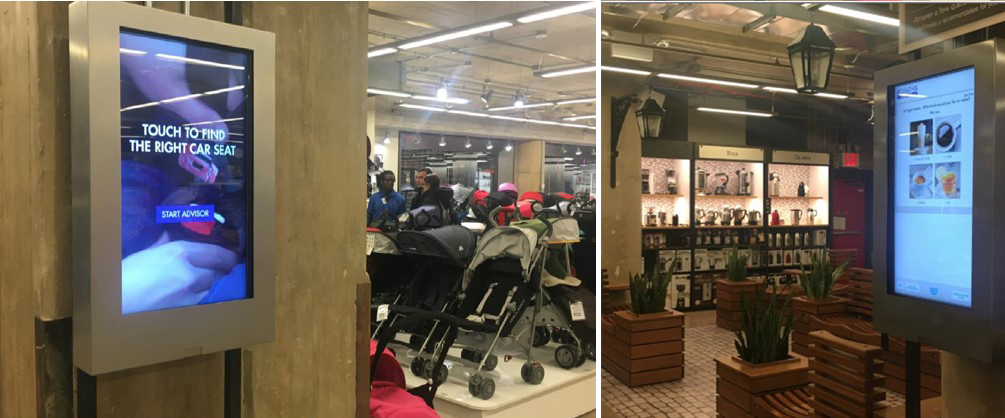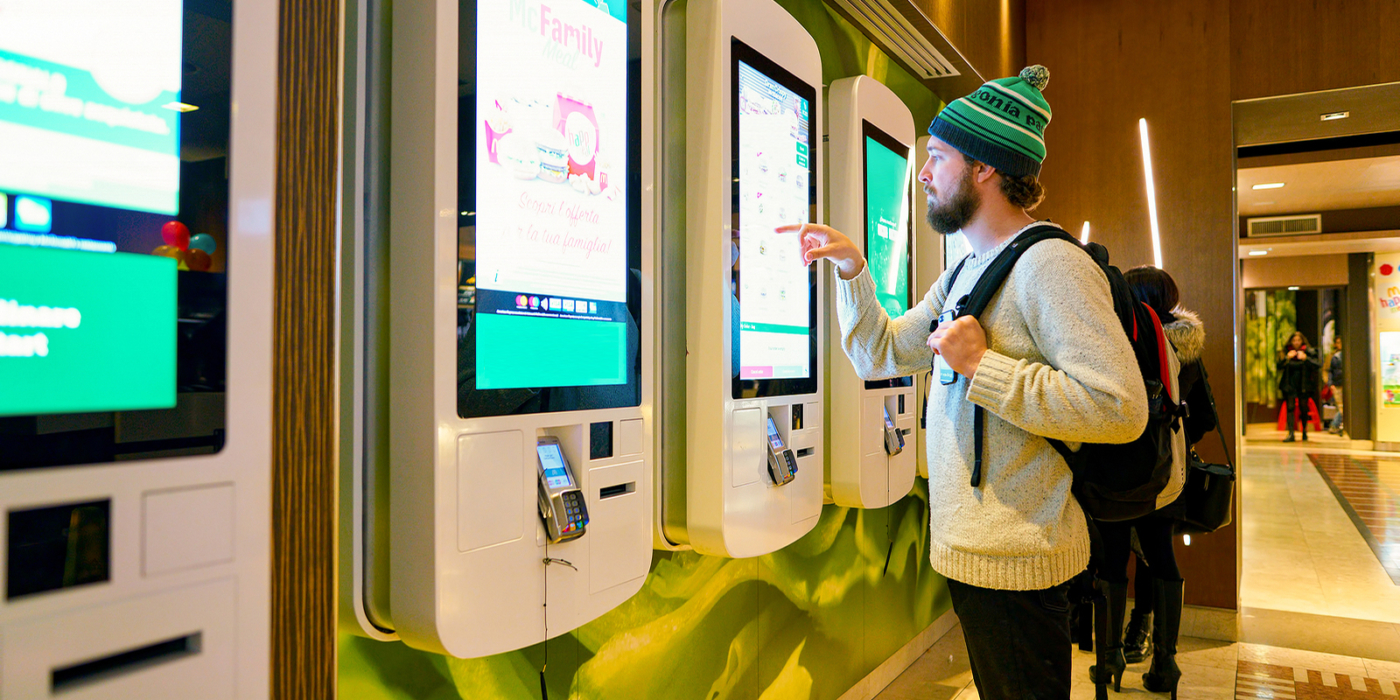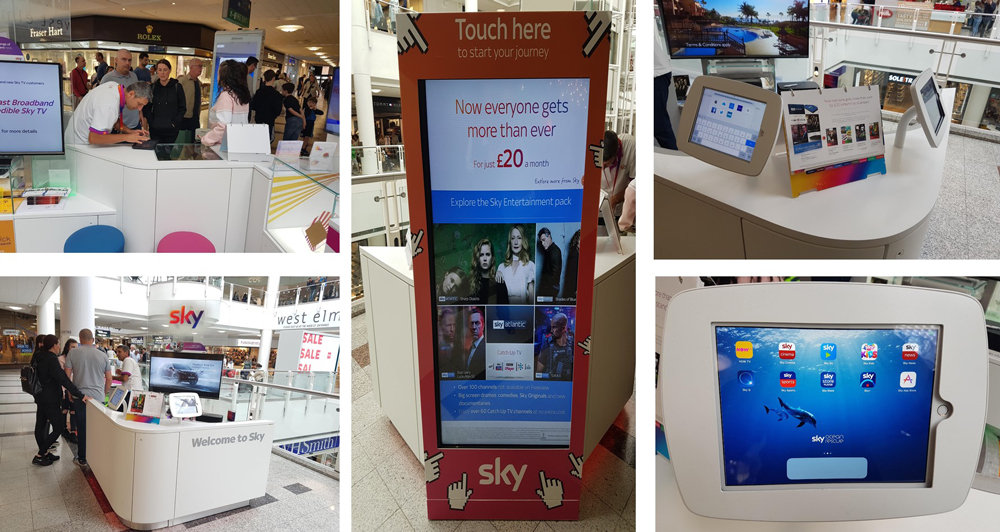In recent years, physical store locations have faced the silent assault of e-commerce. Consumers are growing used to the ability to buy an item with one click and have it in their hands the following day. Not only are we willing to buy most things online, we have more devices than ever to order them from.
This leads to a problem for brick and mortar locations who are left empty as people either stay at home or order items on the go. However, there are a few ways in which physical stores can strengthen their value proposition. Part of the solution is adding digital options to their stores.
Engaging with consumers using these new tactics may lead to increased interactions and visits to local stores.
How to digitize the in-store shopping experience
There are a variety of ways to integrate or add digital solutions to a physical store. Some stores have already begun utilizing these technologies to their locations.
1. Embrace technology
Prior to implementing any of the following technologies, consider if it is a good match for your business and adds to your customer’s experience.
1Augmented Reality
Let a customer test or wear products using this technology. Using filters and images, AR allows people to see a real-life application of the product.
Helzberg Diamonds launched an in-store augmented reality feature called the Helzberg Virtual Ring Experience, which allows shoppers to virtually try on more than 100 different ring styles.
2Virtual Reality
See where a display makes sense for a customer’s journey through the store. VR is useful for customers who want to see a product you don’t have in-store. Take a car dealership for example. With VR, you can showcase a model that isn’t physically on the lot.
German car maker Audi has deployed 1,000 VR showrooms in dealerships worldwide. It allows customers to have a 360-degree look inside and outside the car, open doors and even listen to how their potential new car sounds.
3Artificial Intelligence
There are many ways AI is working into physical stores. Amazon is utilizing it for its wireless checkout in Amazon Go stores. The AI algorithms watch the various video feeds and identify who is picking up an item, and which item they’re picking up.
Other locations are using it to track customers who visit stores after making online purchases. Knowing what the customer has bought in the past is a helpful tool for store employees.
4Voice AI
Having customers activate something via their voice incorporates what they can already do at home. But by adding these capabilities to your store, you can elevate their personal shopping experience. Whether it’s assisting customers at the shelves, self-checkout system or unlocking a product to view it, voice AI has a big future in physical stores.
5Facial recognition
China leads the charge in facial recognition use in stores. Between checking in to hotels, and completing a purchase with a facial scan, this technology simplifies an individual’s interaction with the businesses around them.
Alibaba’s Fliggy online travel agency and Shiji, a hotel information systems manufacturer, have rolled out a facial-recognition system for hotel check-ins at about 50 hotels in Hainan Province, China. With the new system, guests can book hotels on Fliggy and then check in and have credit authorized by having their faces and ID cards scanned at a kiosk at the hotel.
6Sensor data
Stores currently use sensors to prevent theft. But this tracking technology is also transforming into a way to track a customer’s journey in-store. Knowing what products a person viewed or handled is data that stores can use later when re-marketing to that individual.
Sensory data can also help store employees with tracking where products are in the store to prevent item misplacement or confusion on product availability.
2) Become omnichannel
Utilize self-service kiosks, social media, and in-store promotions to encourage customers to visit the store.
7Personalized in-store recommendations
Whenever a sales associate is not available, kiosks and touchscreen displays help out by providing customers with personalized recommendations and assistance that suits their needs.
Sky Mobile uses AI digital sales assistants on tablets in pop up stores. They help sales reps be better equipped when speaking with clients and help guide clients through the best options for their needs. The AI automatically asks the right questions in the right moment and uses the answers to suggest good recommendations for the current shopping needs.
Bed, Bath & Beyond is another example of a retailer that has integrated AI digital sales assistants on dedicated kiosks in strategic areas in the stores, which can be used together with store associate or self-served by the customers.

8Order online, pick up in store
Larger retail chains like Target and Walmart have embraced ordering items online and picking them up at a physical location. This solution is useful for people who don’t want to pay extra for next day delivery or like the ease of ordering something and picking it up later.
A possible subcategory of this option is the ability to scan an item in-store and ordering a different variation of it. This solution showcases a store’s ability to help a customer rather than a website which will only show people that an item is out of stock or unavailable.
9In-store promotions
Although in-store promotions are nothing new, augmenting these events with digital devices or new technology options can drive up attendance.
Offering discounts during an in-store event is a big driver of traffic. Also, it creates fun and interactive ways for consumers to engage with the store has shown to increase visits. Whether it’s a VR device or social media filter, customers enjoy connecting with a brand and showing their friends how they did so on social media.
3) Build In-Store Employee’s Tools
Technology need not only benefit customers, but it can also be useful for in-store employees.
10Find an item quickly
How long it takes to locate an item has an effect on whether or not a customer purchases that item. There are a few devices available now that can help with that:
- Mobile Point Of Sale Devices – These track where an item is in the store allowing employees to quickly locate it for customers. It also lets them know how much stock is left for an item. Some devices even allow employees to check a customer out without going to a kiosk or counter.
- RFID – Radio frequency identification tags track every item in the store. For locations that suffer from frequent item misplacement or customers that have problems locating items, this technology is a helpful solution.
11Continued education
Yes, companies place employees through various trainings when they join the business, but you have to keep up on that training. Even though customers have information at their fingertips, literally, an employee well versed in products can help a store even more and help save customers the trouble of having to look up the data.
Empower employees with technology. Let them log-in to see what product pages are popular with customers. Arm them with devices like LS Recommend, which pools shopping behavior of customers from various channels including in-store and e-commerce.
The rise of online shopping has not reduced the need for brick and mortar stores.
The stores that add technology to their physical locations will entice more visitors to visit them. Whether it’s a location-based promotion or new ways of getting customers the items they want, technology is a useful tool for stores.



